Stay Up to Date
Submit your email address to receive the latest industry and Aerospace America news.
2022 AIAA Election Results
AIAA is pleased to announce the results of its 2022 election:
Integration and Outreach Activities Division
Director–Aerospace Outreach Group
Kevin Burns, Retired
Director–Integration Group
Thomas Irvine, TBI Aerospace Consulting, LLC
Director-Elect–Young Professionals Group
Dominic Pena, Ball Aerospace
Regional Engagement Activities Division
Director–Region IV
Ellen Gillespie, Retired
Director–Region V
James Guglielmo, Boeing Research & Technology
Technical Activities Division
Director–Information Systems Group
Michel Ingham, NASA Jet Propulsion Laboratory
Director–Propulsion and Energy Group
Rusty Powell, Axient, LLC
The newly elected will begin their terms of office in May 2022.
Notice of AIAA Business and Council and Board Meetings
Annual Business Meeting Notice Notice is hereby given that the Annual Business Meeting of the American Institute of Aeronautics and Astronautics (AIAA) will be held on Monday, 25 April 2022, at 1:00 PM, at the Hilton Crystal City at Washington Reagan National Airport, Arlington, VA.
AIAA Council of Directors Meeting Notice is hereby given that an AIAA Council of Directors Meeting will be held on Tuesday, 26 April 2022, at 1:00 PM, at the Hilton Crystal City at Washington Reagan National Airport, Arlington, VA.
AIAA Board of Trustees Meeting Notice is hereby given that an AIAA Board of Trustees Meeting will be held on Wednesday, 27 April 2022, at 9:00 AM, at the Hilton Crystal City at Washington Reagan National Airport, Arlington, VA.
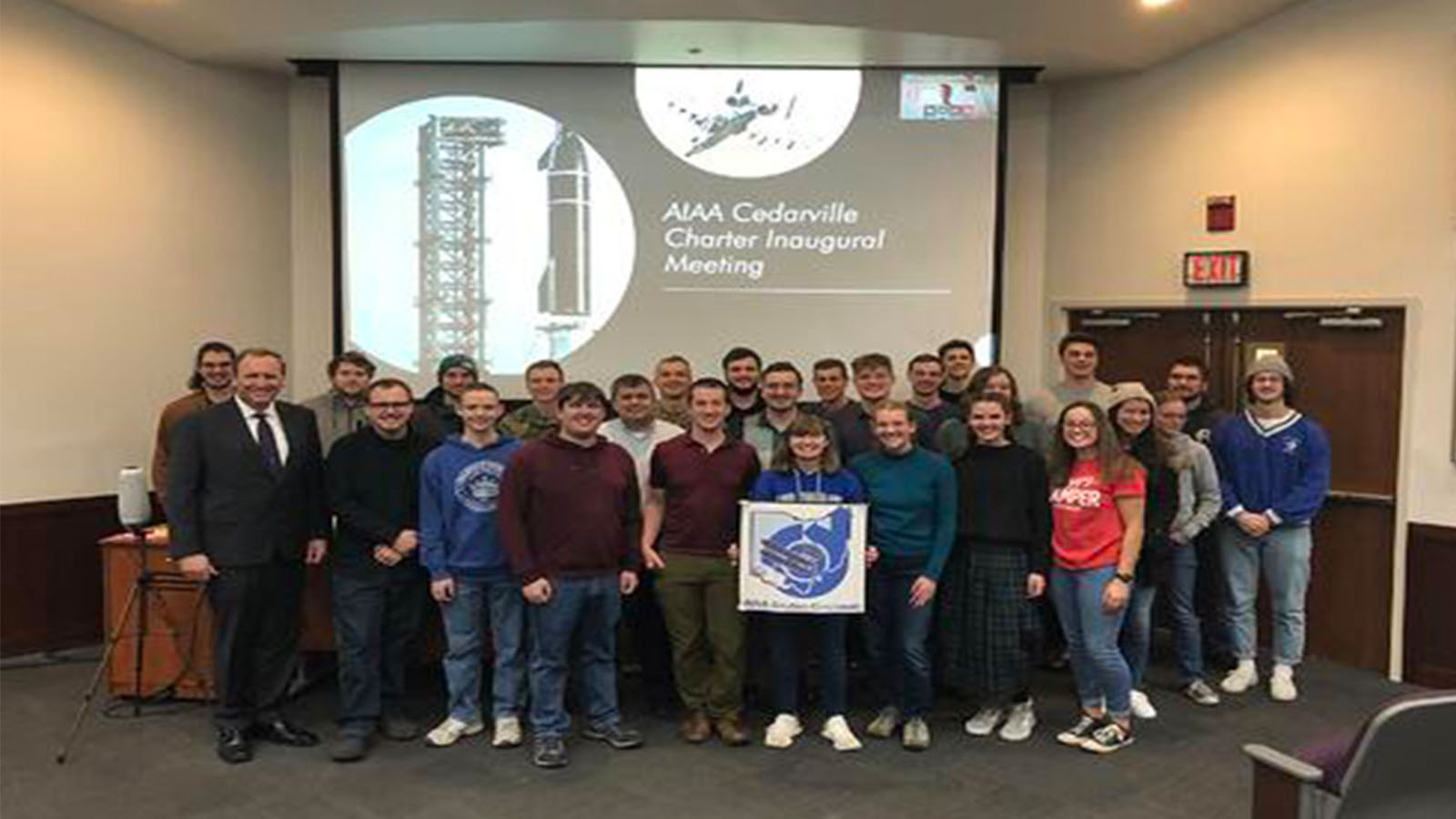
New AIAA Student Branches
AIAA has chartered two new AIAA student branches—Cedarville University in Cedarville, Ohio, and the University of Calgary in Alberta, Canada. These schools join our 240+ AIAA student branches.
AIAA is currently accepting applications to establish additional student branches. If you know a college or university that is interested in chartering an AIAA Student Branch, applications are open until 11 April. For more information, visit aiaa.org/get-involved/students-educators/Student-Branches.
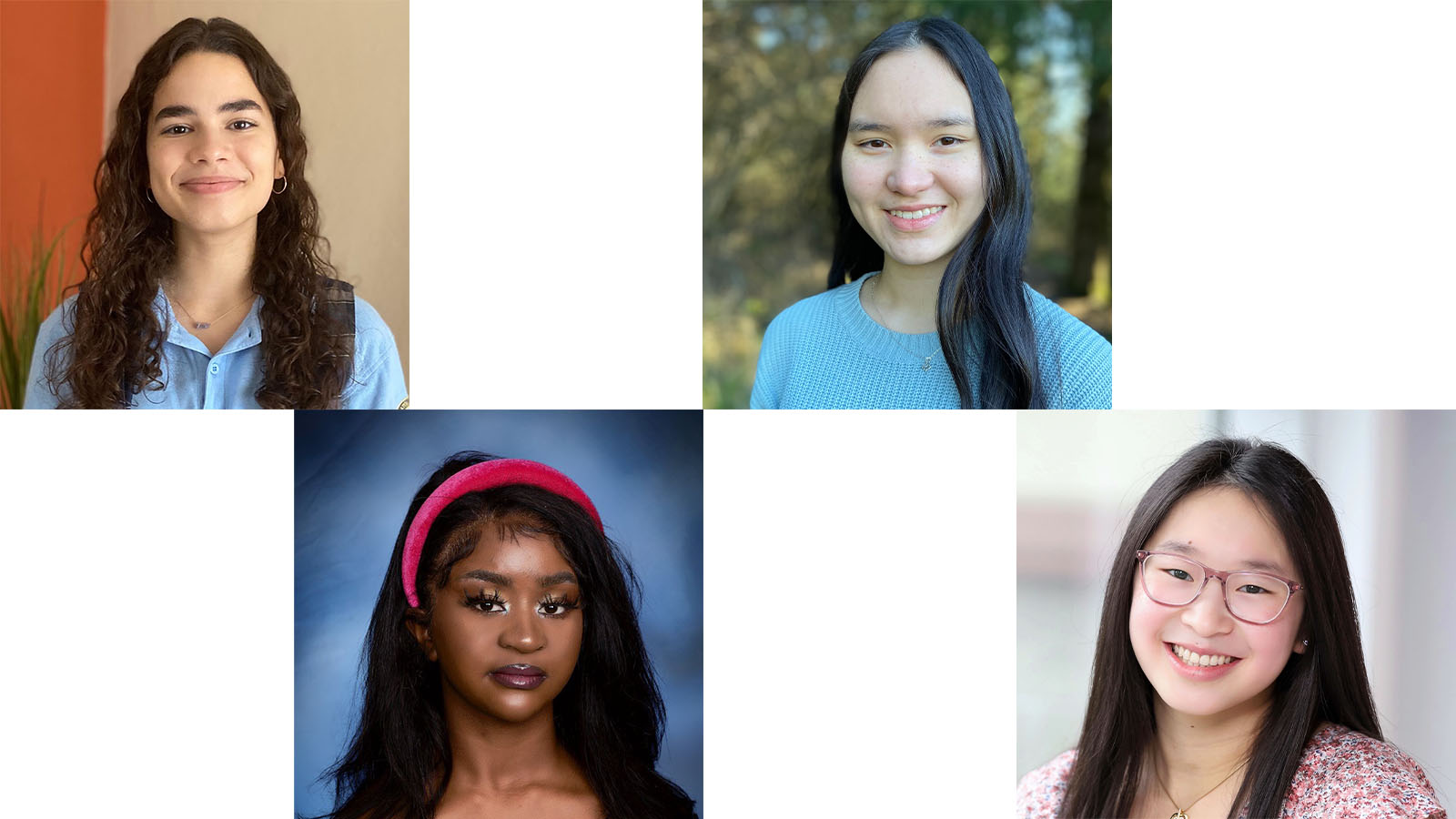
Making an Impact: 2022 Kahn Scholarship Recipients Announced
In 2021, when AIAA announced the Roger W. Kahn Scholarship to honor Kahn and his passion for aviation and entertainment, we were thrilled to have so many high school seniors from all over the world apply. This year, we received scholarship applications from over 120 high school seniors, and after weeks of deliberation, AIAA is happy to announce that Favianna Colón, Nchenui Moundae Jamila, Elizabeth Kung, and Mariah Tammera will each receive a $10,000 Kahn Scholarship to support their educational journey in the fall. These students also will be awarded a travel stipend to attend the AIAA Awards Gala in April and an AIAA professional member mentor to help guide the student on their career path.
Favianna Colón
Notre Dame High School, Caguas, Puerto Rico
Born on the beautiful island of Puerto Rico to parents Christine Irizarry and José Colón, I am the eldest child, a trained ballet dancer, and the first member of my family to pursue university studies outside the isle’s borders—I hope to attend MIT or Georgia Tech in the fall. My decision to do so came over four years ago, in 2018, when I traveled to Washington, DC, to compete in the National Science Bowl and fell in love with the vibrant campus life.
I am currently a senior at Notre Dame High School in my hometown of Caguas, Puerto Rico. I participate in a specialized STEAM program offered there that, over the years, has inspired my fondness of discovery and creation. At the school, I am an active member of numerous organizations, including the Chemistry Club, Honor Society, and Mathematics Club, of which I am president. Thanks to participation in these, I have managed to be a great prospect in competitions like the Puerto Rico Math Olympiad. Further, such institutions have assisted me in discerning my passion for Chemical and Biological Engineering.
Outside of school, in 2019, I participated in a research initiative hosted by NASA in the Arecibo Observatory called STAR Academy. I graduated as the program’s salutatorian and, during my time there, investigated black hole types and emerging trends in their development throughout the universe. Such experience steered me to also seek a minor in Astronomy.
Nchenui Moundae Jamila (Jamila)
Paul M. Hodgson Vocational Technical High School, New Castle, DE
I am an aspiring aerospace engineer who grew up in the Central African country of Cameroon and moved to the United States when I was 10 years old. Engineering has always been something that I loved, and I was always fixing and assembling things as a child. I never knew exactly what type of engineering I wanted to specialize in, so I decided to apply for the manufacturing and pre-engineering vocational high school program, which explored every aspect of engineering spanning from machining to CAD design, coding, to circuity, rocket science and robotics. Though intrigued by different fields of engineering, I found rocket science, machining, and robotics units the most challenging and interesting. I wanted a specialization that combined all of my interests, and I always had a strong interest in global warming since I was 12 — I even did a science fair project on the effects of co2 emission. While researching the project I found that research and development for electric cars and solar power were almost definitive at the time, but that of electric airplanes was really far off. I then realized that aerospace engineering was perfect for me, as I could incorporate my interest in global warming, fulfill a personal vendetta against my misogynistic culture, and blend many of the types of engineering I had a passion for. I have a long-term goal of being a key part in the development of an electric airplane.
Elizabeth Kung
Sunset High School, Portland, OR
I was born and raised in Oregon and have always been an active person, curious to try new endeavors. In my early years, I attended a Chinese immersion school, and I am able to fluently read, write, and converse. I love the team atmosphere and the competitive nature of sports, and I’ve played football, was the captain of my rugby team, attended swimming competitions, and achieved a USA Ballroom Dance Nationals 2nd-place finish.
Space has always been my biggest passion. I was introduced to the magnificence of space through three movies: October Sky showed me how to dream, Hidden Figures showed me how to pursue, and Apollo 13 showed me how to persevere. These films were an inspiration, leading me to participate in engineering classes, visit local companies like Boeing, and compete in the Conrad Challenge, becoming a “Conrad Innovator” for two projects: ClearCube (space debris removal) and Mile One (ecofriendly, sustainable shipping). I also had the pleasure of attending two NASA summer camps: one in Alabama, where my team won the “Commander’s Cup,” and another in Florida, where I witnessed a rocket launch.
I have a desire to further space exploration. Whether or not this involves working on rockets, researching new materials, assembling rovers, learning to fly, or cleaning up space debris, I want to be part of this special time in history. I intend to pursue a degree in Aerospace/Astronautical Engineering and work in the space industry.
Mariah Tammera
Highland School, Warrenton, VA
When I was in first grade, my favorite book was There’s No Place Like Space by Tish Rabe. I remember thumbing through the colorful, eye-catching pages and absorbing every little detail about the planets, sun, moon, and lunar rovers. My childhood imagination expanded as thoughts captured these topics. It was from this point on that I realized my wholehearted passion for space exploration.
In the spring of 2018, my school gave me the opportunity to attend Space Camp in Huntsville, Alabama, for one week. There, I was able to delve deeper into learning more about the career opportunities in the Aerospace field, while also being challenged to use critical thinking and problem-solving skills in group activities. My experiences at Space Camp sparked an interest in a career in Aerospace Engineering. The specifics of my career aspirations began developing after being accepted into the Virginia Aerospace Science and Technology Scholars (VASTS) Online Course program during my junior year of high school and subsequently participating in the VASTS Summer Academy: an invitation-only program. While conducting research on robotic space missions for a module assignment, I discovered an inclination toward learning more about robotic space mission rovers and the scientific instruments used on those vehicles.
All these experiences — from childhood to present day — have encouraged me to set a future career goal aimed at contributing toward furthering humankind’s preparation for long-term space exploration by aspiring to participate in the design and development of robotic apparatuses.
To find out how to get involved with AIAA and make an impact please visit.aiaa.org/foundation or contact Alex D’Imperio, [email protected].

SAT OC’s Latest Endeavors
By Amir S. Gohardani, SAT OC Chair
The Society and Aerospace Technology Outreach Committee (SAT OC) continues to investigate the interests of its membership. With goals of advancing its mission of promoting the transfer and use of aerospace technology for the benefit of society, a recent committee meeting addressed a completed member survey. SAT OC members discussed various topics such as engagement and communications, allowing for clear objectives about the scope of current and future committee activities.
SAT OC’s History
At 2022 AIAA SciTech Forum, glimpses of SAT OC’s history were presented in the paper, “The History of the AIAA Society and Aerospace Technology Outreach Committee,” which was crafted following an initiative by the AIAA History Committee to encourage every committee, section, and AIAA Headquarters to document various historical elements for the AIAA Centennial. It was noted during a recent SAT OC meeting that with the emergence of more aerospace technologies affecting people in society, it remains crucial for this committee to continue its activities and to bring awareness about the impact of aerospace technology on society. Ranging from popular culture to life on other planets, there will certainly be no shortage of topics for exploration, and thus, exciting SAT OC times lie ahead.
The Launch of the Diversity Corner
As a member of an outreach committee, I have always found it of paramount importance that voices belonging to members from all walks of life, all genders, ethnicities, and races should be represented within our committee. Having had the privilege of serving as the chair for SAT OC since 2017, there has been ample time for reflection. Over the years, I have come to realize that despite our best efforts, we occasionally fall short when it comes to the representation of the entire industry. This is partially due to the inherent silos between different committees and the limitations of committee activities. Therefore, this year, I have made a deliberate choice of reaching out to the AIAA Diversity and Inclusion Working Group. After floating the idea of the “Diversity Corner” that I have nourished in mind for quite some time now, I am delighted to announce that hereafter, a new collaboration between SAT OC and the AIAA Diversity and Inclusion Working Group will allow for a more inclusive AIAA. In a nutshell, this collaboration seeks to highlight individuals selected by the working group who have made notable contributions to the aerospace industry with significant societal impact. SAT OC is grateful to the AIAA Diversity and Inclusion Working Group for being receptive to collaborative efforts and equally excited about the launch of the first Diversity Corner, which coincides with the last day of Black History Month. In the United States, the contributions and sacrifices of African Americans who have helped shape the nation are honored during this important month. Claudine Phaire has graciously contributed to the Diversity Corner.
Diversity Corner
Name: Christine Darden
Notable Contributions: Darden wrote a computer program for predicting the sonic boom that launched her 25-year career in sonic boom minimization. She has also served as a technical consultant on numerous government and private projects. Her efforts were critical in developing the Quiet SuperSonic Technology (QueSST), which has become the Low Boom Flight Demonstrator (LBFD) aircraft and is currently being manufactured by Lockheed Martin Skunk Works. Test data from the aircraft will help NASA provide regulators with the information needed to establish an acceptable commercial supersonic noise standard to lift the ban on commercial supersonic travel over land. Darden is the author of more than 50 publications in the field of high lift wing design in supersonic flow, flap design, sonic boom prediction, and sonic boom minimization. Featured in the book Hidden Figures, Darden has not only contributed to engineering excellence, but throughout her career, she consistently advocated for women to receive equal roles as men who had similar educational backgrounds.
Potential Societal Impact of Contributions: Darden has inspired generations with her notable contributions. A breakthrough in low-boom fight could further open the doors to an entirely new global market for aircraft manufacturers, enabling passengers to travel anywhere in the world in less time than it takes today.
Please join AIAA, the National Society of Black Engineers, and the Royal Aeronautical Society for the Mary Jackson Lecture featuring Dr. Darden. Dr. Mary Jackson was the first black female aerospace engineer at NASA in 1958. The lecture will be held on Thursday, 10 March, at 1100 hrs EST and can be accessed at https://bit.ly/3HdY936.
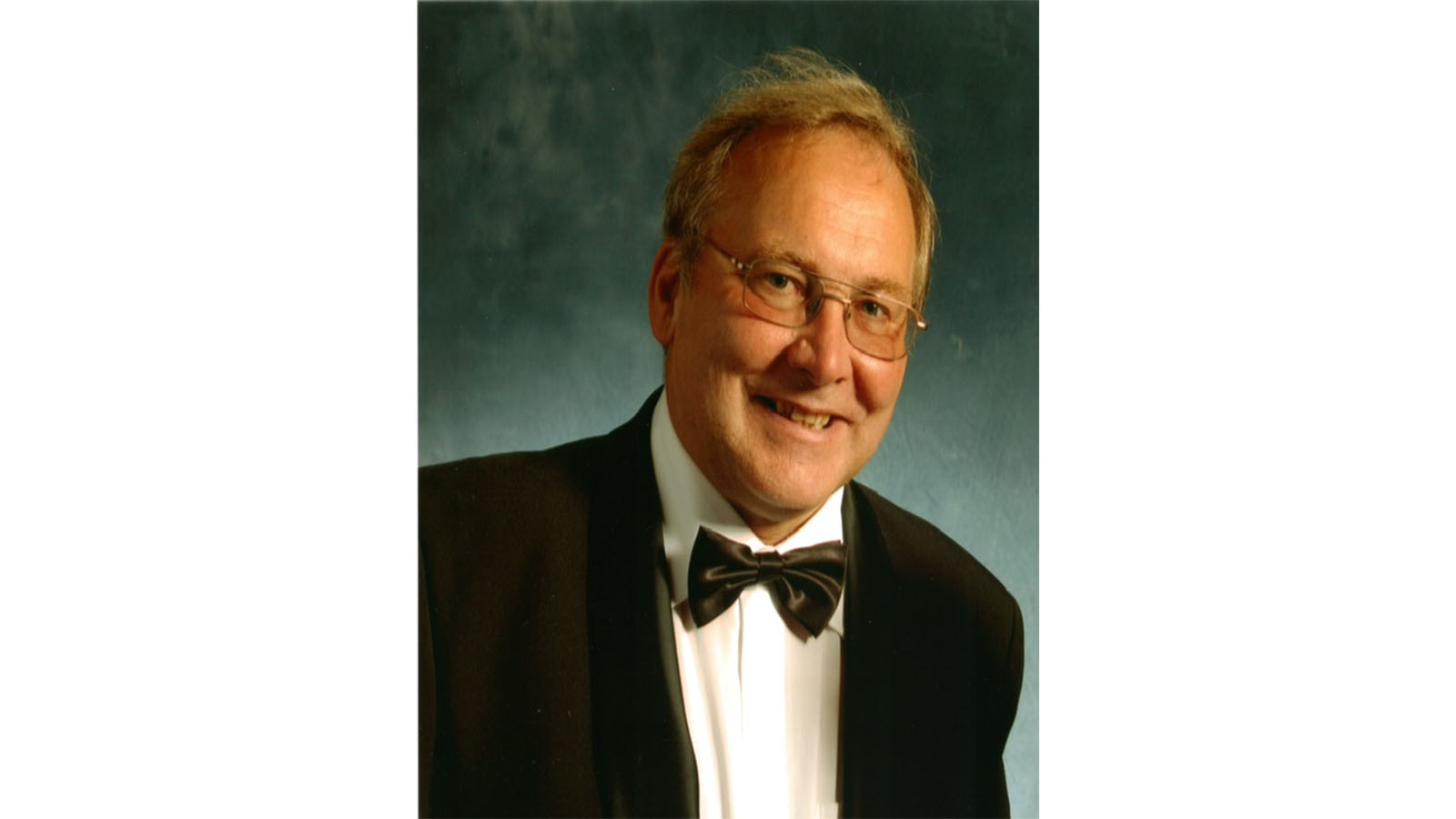
AIAA Associate Fellow Haines Died in September 2021
James (Jim) Haines died on 15 September 2021 at the age of 77.
Haines grew up around London and graduated with a degree in electrical engineering. He started working for Hawker Siddeley in Stevenage as an electronics engineer, and then joined British Aerospace. In 1983, Haines moved to the European Space Agency in the Netherlands where he worked on programs like the Hubble Space Telescope, Mars Rover, Galileo, and many other ESA programs alongside NASA. He retired from the ESA as acting Division Head of the Electrical Power Systems.
Even after his retirement, Haines continued attending Space Power Conferences hosted by ESA in Europe and AIAA in the United States, where he was invited to organize and chair sessions in space power. Haines was a regular and longtime attendee of the Intersociety Energy Conversion Engineering Conference (IECEC), International Energy Conversion Engineering Conference (IECEC), and the Joint Propulsion Conference. He continued to travel to the AIAA conferences over the last 20 years to render his dedicated services as an author, paper reviewer, organizer, and session chair in aerospace power systems.
Haines was a longtime member of the AIAA Aerospace Power Systems Technical Committee, and for his significant and sustained contributions in space power, he was honored with the 2007 AIAA Aerospace Power Systems Award.
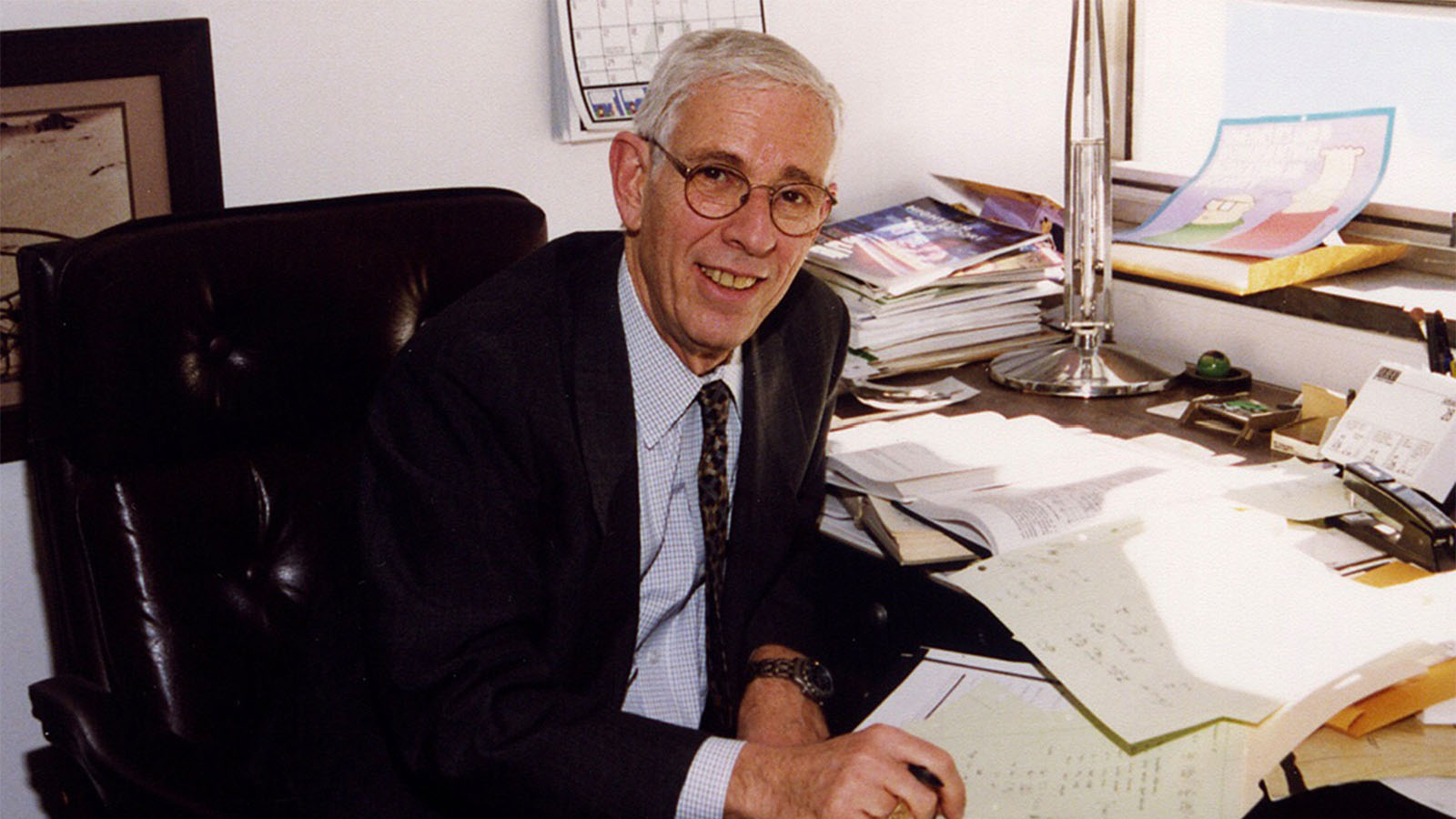
Associate Fellow Fox Died in January
Herbert Fox died on 1 January 2022. He was 82 years old.
Dr. Fox graduated from the Massachusetts Institute of Technology and earned a master’s degree and Ph.D. from Polytechnic Institute of Brooklyn in 1962 and 1964, respectively.
After receiving his Ph.D., Dr. Fox joined the faculty of the Aerospace Engineering Department of New York University. In 1970, he became a professor and dean of Science and Technology at the New York Institute of Technology. For several years after 1977, he served as vice president of consulting services at Pope, Evans and Robbins, Inc., a consulting engineering firm in NY. He was responsible for studies and designs dealing with alternative fuels and energy conservation. From 1982 through 1989, Fox rejoined New York Institute of Technology as senior vice president for scientific research. Under his leadership the school developed significant capabilities to serve the government and industrial communities. In 1989, he became senior vice president for academic affairs, playing a key role in elevating many technology programs at New York Tech into reputable ABET-accredited engineering disciplines. During his tenure as a faculty member, he worked to promote and expand research among faculty and students. In 1992, he returned to teaching, serving as a professor of mechanical engineering until he retired in 2012.
Dr. Fox’s publications include over 70 articles and two books. He was a member of the American Society of Mechanical Engineers, New York Academy of Science, American Association for the Advancement of Science, and the Society of Sigma Xi. An AIAA Associate Fellow, Dr. Fox was an active AIAA volunteer, serving on the Board of Directors as Vice President of Education and on other AIAA committees.
AIAA Associate Fellow Williams Died in January
Francis L. (Frank) Williams died on 1 January. He was 92 years old.
Williams earned a Bachelor of Science in Aeronautical Engineering from Alabama Polytechnic Institute in 1951, and was president of the student chapter of the Institute of the Aeronautics. He was commissioned a Second Lieutenant in the U.S. Air Force after ROTC, and he honorably served for seven years, achieving the rank of Captain. He was the flight engineer on the joint B52 mission that dropped the first hydrogen bomb over Bikini Atoll in the Pacific Ocean in 1956.
While serving in the Air Force, Williams earned a Masters Degree in Aeronautical Engineering from the Massachusetts Institute of Technology. Convinced that spaceflight could be a reality, he requested relief from active duty to work in Huntsville, AL, with the von Braun Team, continuing his career with NACA and then NASA.
From 1960 to 1969, Williams served as Deputy Director, Future Projects, and Assistant to Dr. Wernher von Braun, Center Director at Marshall Space Flight Center. He received the NASA Exceptional Service Medal for his contribution to the Saturn Launch Vehicle and Apollo Lunar Landing Program. He served with Frank Borman for one year at the Manned Space Craft Center in Houston where he established the Space Station Task Force, before moving to NASA Headquarters with Dr. von Braun in 1970.
While at NASA Headquarters, Williams served is Director of Program Analysis and Long Range Planning in special programs, and developed six satellites, including SEASAT. He retired from NASA in 1978, and accepted a position as Director, Program Development with Martin Marietta Corporation. He was instrumental in building the external fuel tank for the Space Shuttle Program. Williams was an AIAA Associate Fellow and the author of over 40 technical papers, a major author of the Handbook of Astronautics, and was a guest lecturer at several U.S. and international universities.
AIAA Associate Fellow Blankenship Died in January
Charles P. Blankenship died on 21 January. He was 83 years old.
Blankenship was a graduate of Virginia Tech (Corps of Cadets, Class of 1960). He earned B.S. and M.S. degrees in Metallurgical Engineering, and he served as a commissioned officer in the U.S. Air Force.
In 1961, Blankenship was assigned to NASA Lewis Research Center, where he conducted materials technology development programs for aircraft and space transportation systems. After completing his Air Force tenure, he continued his materials development work with NASA at the Cleveland Center. In 1980, he transferred to NASA Langley Research Center as Chief of the Materials Division. And in 1983, he was appointed Langley’s Director for Structures and led the center’s aircraft and spacecraft research and technology programs in materials, structures, landing dynamics, and acoustics. He was selected to lead the center’s newly expanded program for Technology Commercialization in 1993. He served as Deputy Director of NASA Marshall Space Flight Center beginning in 1994. In this capacity he was a leader in the development of the new super lightweight tank for the Space Shuttle. He returned to Langley in 1996 to serve as the Agency Manager for NASA’s Subsonic Aircraft Technology Program.
During his NASA career, Blankenship received the Presidential Meritorious Award, the NASA Outstanding Leadership Medal, the SEA National Distinguished Executive Service Award, and the SAE Wright Brothers Medal. He published and presented numerous papers on materials technology developments for applications that included aircraft and automotive turbine engines, aircraft and spacecraft structures, and nuclear propulsion systems.
After retiring from NASA in 1997, he served as a technology consultant to industry and to several government agencies. He served as the Director of the Technology Commercialization Center from 2000 to 2003. In 2007, Blankenship was inducted into the Academy of Engineering Excellence, College of Engineering, Virginia Tech.
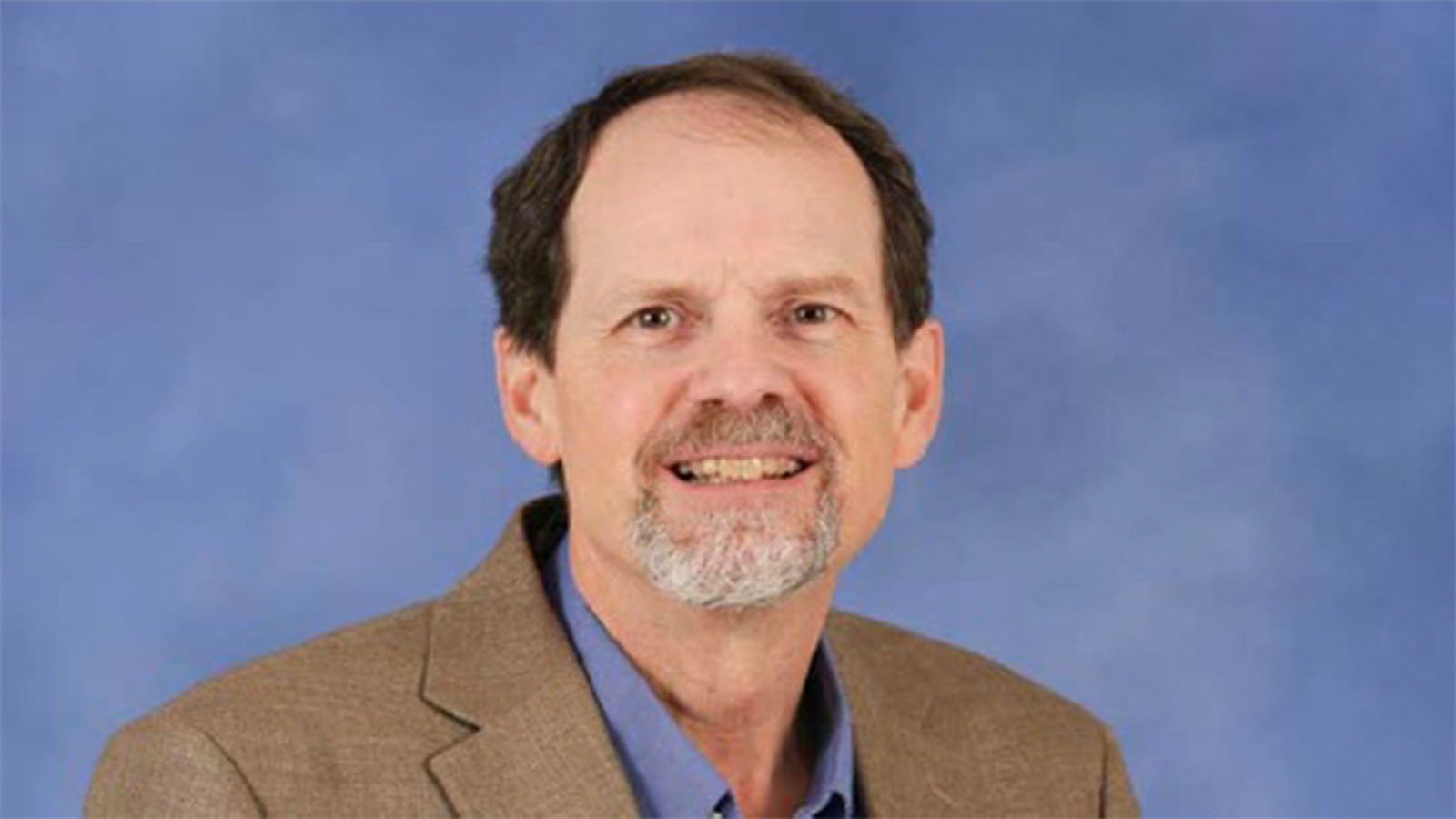
AIAA Associate Fellow Landrum Died in January
D. Brian Landrum died on 21 January. He was 59 years old.
Landrum received his B.S. and M.S. degrees from Texas A&M University in 1984 and 1986, respectively. After two years at Sandia National Laboratories, he completed his Ph.D. at North Carolina State University in 1992.
He then began his 30-year teaching career at the University of Alabama in Huntsville (UAH) where he was an Associate Professor and Associate Chair of Mechanical and Aerospace Engineering. He taught courses in aircraft and missile aerodynamics, and aerospace vehicle design. He also created and taught the introductory Principles of Aeronautics and Astronautics course. His research interests included aerospace system design, unmanned aerial systems, low-speed and biologically-inspired flight, hypersonics, engineering education, and aerospace history. He authored or co-authored more than 120 journal articles and technical papers, and Landrum also advised 5 Ph.D. and 39 M.S. degree graduates.
Landrum was the AIAA National Faculty Advisor of the Year in 2004, and he received the Technical Activities Committee Distinguished Service Certificate from AIAA in 2010. He was also the recipient of the AIAA Greater Huntsville Section’s Educator of the Year award in 2017–2018 and the Professional of the Year award in 1999–2000. In addition, Landrum was a member of the American Society of Engineering Education, the Association of Unmanned Vehicle Systems International, and the American Helicopter Society.

AIAA Fellow Hodges Died in January
Dewey H. Hodges, one of the foremost aerospace researchers of his generation, died on 31 January. He was 73 years old.
Hodges majored in aerospace engineering at the University of Tennessee in Knoxville, where he earned a scholarship with the U.S. Army ROTC before graduating with high honors in 1969. He began graduate school at Stanford University on an all-expenses-paid NASA trainee fellowship, and he earned his master’s degree in 1970 and his Ph.D. in 1973. Hodges became an officer in the U.S. Army, he made captain in 1975, and retired from active service in 1977.
In 1970, while a student at Stanford, Hodges took a summer job as a research scientist at the U.S. Army Aeronautical Research Laboratory at Ames Research. He parlayed that summer job into an illustrious 16-year career at NASA Ames. His many accomplishments at the Moffett Field research center include his seminal work on rotor stability and a 1974 NASA Technical Note, which he co-authored with Earl H. Dowell, detailing what became known as the Hodges-Dowell beam equations. This paper remains among the field’s most cited publications of all time.
In 1986, Hodges joined the faculty of the Daniel Guggenheim School of Aerospace Engineering at Georgia Institute of Technology as a full professor. He became a world-renowned scholar who taught, published landmark papers and classic textbooks, conducted research, and advised graduate students for more than 35 years. In 2003, he authored another engineering breakthrough that bears his name. “Hodges’ geometrically exact, fully intrinsic beam equations” superseded the Hodges-Dowell equations as the new standard in the field.
Though he was one of the world’s foremost rotorcraft dynamics experts, Hodges always regarded his relationships with his graduate students as the most important aspect of his life’s work. He became professor emeritus in May 2020 and continued to guide and collaborate with his remaining graduate students, edit academic journals, and contribute to the field. He mentored 36 Ph.D. and 42 master’s degree students over his career.
Hodges’ professional achievements include five books, five book chapters, two U.S. patents, approximately 230 technical papers in refereed journals, and another 175 published conference papers. One of his pioneering computer programs, VABS, which he developed with his graduate students, remains the standard tool for rotor blade design around the world. He served on the editorial boards of at least six academic journals and was elected fellow of four professional societies: the American Academy of Mechanics, the American Helicopter Society, AIAA, and the American Society of Mechanical Engineers. In recognition contributions to engineering, he received more than 20 prestigious national and international awards, including the 2013 AIAA Ashley Award for Aeroelasticity and the 2018 AIAA Structures, Structural Dynamics, & Materials Award.
Stay Up to Date
Submit your email address to receive the latest industry and Aerospace America news.




